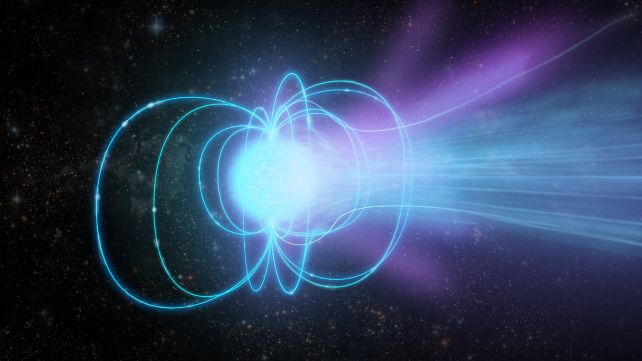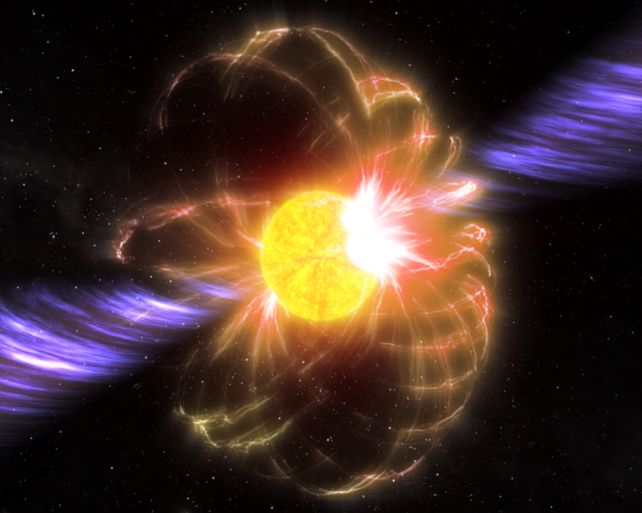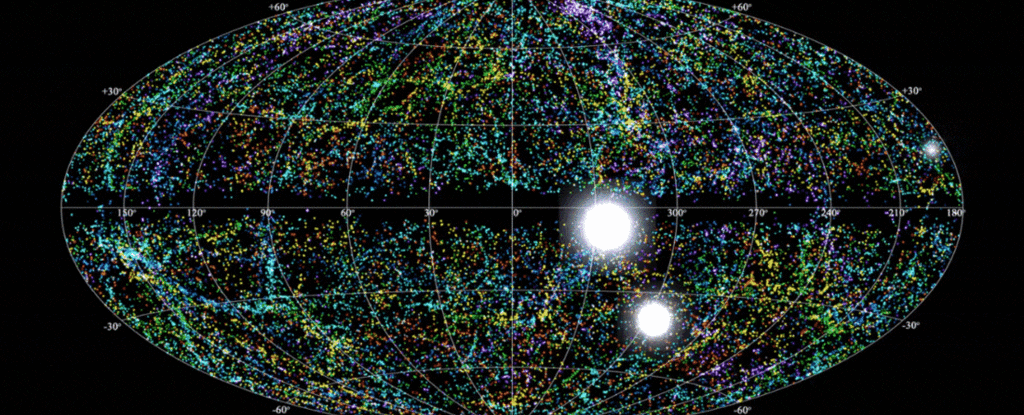Products You May Like
From all over the sky, the Universe is hurling mysterious signals.
We don’t really know what they are, or what’s making them; but a new analysis of where they are coming from gives us clues about the sources of the strange emissions we call fast radio bursts (FRBs).
Led by astronomer Kritti Sharma of the California Institute of Technology, an international team conducted a census and determined that FRBs are more likely to come from galaxies with relatively young star populations. This is somewhat expected. What the researchers didn’t expect was that those galaxies were more likely to be quite large, with large numbers of stars – which are actually pretty rare.
This suggests that there might be something unusual about the way FRBs are generated.
We already have some pretty good ideas about what FRBs are. First, a description: they are very powerful but very brief emissions of radio light that last from fractions of a millisecond to several seconds. They come from all across the sky, their sources millions to billions of light-years away often seeming to flash once and never again.

This makes them impossible to predict and difficult to trace, but we’re getting better at detection with wide-view surveillance, and better at locating their host galaxies, too.
As for what they are, we’re homing in on that too. Spoiler: it’s not aliens. Rather, the first FRB detected right here in the Milky Way back in 2020 was traced to a magnetar – a type of neutron star that has a magnetic field 1,000 times more powerful than an ordinary neutron star’s. The push-pull interaction between the magnetic field and the object’s gravity can create starquakes that send radio light flashing across the sky.
Not all FRBs behave the same, so it’s possible that there is more than one kind of source. Narrowing down where those sources sit tells us something about the environmental conditions that are most likely to produce them, which in turn allows us to make inferences about what they are.
Sharma and her colleagues collected observations using a radio interferometer called the Deep Synoptic Array in a new effort to detect FRBs and localize them. They carefully studied the properties of 30 FRB host galaxies, and determined that the radio bursts typically emerge from galaxies with populations of young stars.
This is not surprising if FRB progenitors are magnetars. Neutron stars are the collapsed cores of massive stars that have gone supernova via core collapse, and massive stars have shorter lifespans than smaller ones. Magnetars are young neutron stars, so we expect to find them in places where most of the stars are young and have short lives.
Although some FRBs have previously been detected in populations of old stars, and in low-mass galaxies, the team’s analysis showed that the most common progenitors by far are high-mass galaxies with young stars. This suggests that massive, young stellar environments are important for the formation of FRB progenitors; if they were not, we’d see a broader distribution across galaxy types.

Why this might be is unknown, but the researchers believe that the metallicity of these massive star-forming galaxies might play a role. Massive galaxies typically have a much higher metal content than lower-mass counterparts, and tend to make heavier stars, too.
But there’s another problem. Core-collapse supernovae take place at a rate similar to the rate of star formation in the Universe. If the magnetars that produce FRBs form in this way, the distribution of FRBs should be broadly consistent with the distribution of core-collapse supernovae, even for low mass galaxies – but it isn’t. This suggests that magnetars that form via core collapse are not the main FRB progenitor.
The team conducted simulations, and found a solution. The magnetars that emit FRBs could form from binary star mergers. This is more likely to occur in environments with more massive stars, such as the galaxies the researchers identified.
We still don’t have a holistic explanation for the origins of FRBs, but the research significantly strengthens the case for magnetars, and suggests that special circumstances for the formation of those magnetars are also at play.
The study of FRBs is still progressing, but astronomers are discovering more of the strange signals constantly. The more we find, the more data we will be able to crunch to resolve the mystery of FRBs’ origins. It’s a tremendously exciting time to be alive and studying the stars.
The research has been published in Nature.
